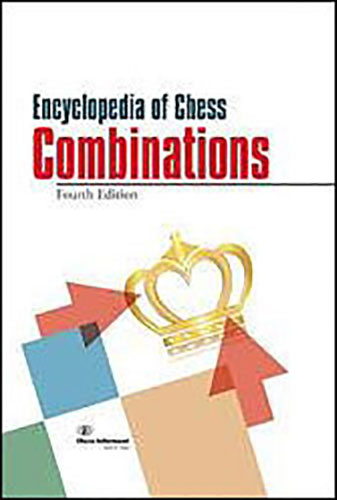- Winkel
- >
- Schaken
- >
- Schaakboeken
- >
- Encyclopaedia
- >
- Encyclopedia of Chess Combinations
Encyclopedia of Chess Combinations
SKU:
€39.95
€39.95
Unavailable
per item
- Chess Informant Team
- Informator Verlag
- 656 blz.
- Engels
- 5th edition, 2015
ANTHOLOGY OF CHESS COMBINATIONS brings a selection of the most valuable achievements made at the competitions for 200 years (the oldest example is from 1789). It is certain that all the examples which deserve consideration are not collected. But most of them are here. Total of 2001 combinations.
Chess combination is a forced variation with a sacrifice which leads to a positive result. Classification of chess combinations, which has this definition as its basis, removes all possible mistakes when making a classification. Which is an unavoidable condition.
In the example
P A (code) 1, 2, 3 II Pawns (sacrifice) it is the question of combinations with a sacrifice of pawns only.
A few more examples:
N A (code) Knight (sacrifice) combinations with a sacrifice of only one knight;
B C (code) Bishop (sacrifice) combination with a sacrifice of only one bishop and one knight;
R G (code) Rook (sacrifice) combination with a sacrifice of only one rook, one bishop and one knight;
Q M (code) II Queen (sacrifice) combinations which are not comprised by the previous codes with a sacrifice of a queen.
Such a numeric classification is not based on the character of a position or some of the themes that have found their places in chess theory. Two additional criteria remove this emptiness:
1.
I Combinations with mating attack
II Combinations to reach the draw
III Combinations leading to material advantage
IV All the others combinations
2.
a Annihilation of defence
b Blockade
c Clearance
d Deflection
e Discovered attack
f Pinning
g Demolition of pawn structure
h Decoy
i Interference
j Double attack
Some examples have more than one theme, and they are marked in such a way.
Sign * beside the players' names shows that it is a position from the analysis of an important variation, and not the original moves of the game.
Content
004 System of signs
007 Classification
010 a. Annihilation of defence
067 b. Blockade
080 c. Clearance
198 d. Deflection
258 e. Discovered attack
288 f. Pinning
310 g. Demolition of pawn structure
440 h. Decoy
586 i. Interference
606 j. Double attack
615 Register
648 Commentators
Chess combination is a forced variation with a sacrifice which leads to a positive result. Classification of chess combinations, which has this definition as its basis, removes all possible mistakes when making a classification. Which is an unavoidable condition.
In the example
P A (code) 1, 2, 3 II Pawns (sacrifice) it is the question of combinations with a sacrifice of pawns only.
A few more examples:
N A (code) Knight (sacrifice) combinations with a sacrifice of only one knight;
B C (code) Bishop (sacrifice) combination with a sacrifice of only one bishop and one knight;
R G (code) Rook (sacrifice) combination with a sacrifice of only one rook, one bishop and one knight;
Q M (code) II Queen (sacrifice) combinations which are not comprised by the previous codes with a sacrifice of a queen.
Such a numeric classification is not based on the character of a position or some of the themes that have found their places in chess theory. Two additional criteria remove this emptiness:
1.
I Combinations with mating attack
II Combinations to reach the draw
III Combinations leading to material advantage
IV All the others combinations
2.
a Annihilation of defence
b Blockade
c Clearance
d Deflection
e Discovered attack
f Pinning
g Demolition of pawn structure
h Decoy
i Interference
j Double attack
Some examples have more than one theme, and they are marked in such a way.
Sign * beside the players' names shows that it is a position from the analysis of an important variation, and not the original moves of the game.
Content
004 System of signs
007 Classification
010 a. Annihilation of defence
067 b. Blockade
080 c. Clearance
198 d. Deflection
258 e. Discovered attack
288 f. Pinning
310 g. Demolition of pawn structure
440 h. Decoy
586 i. Interference
606 j. Double attack
615 Register
648 Commentators
